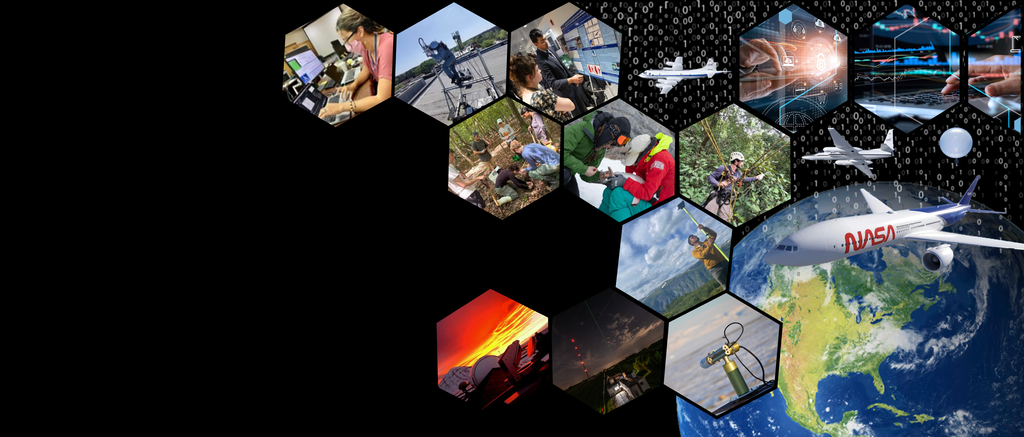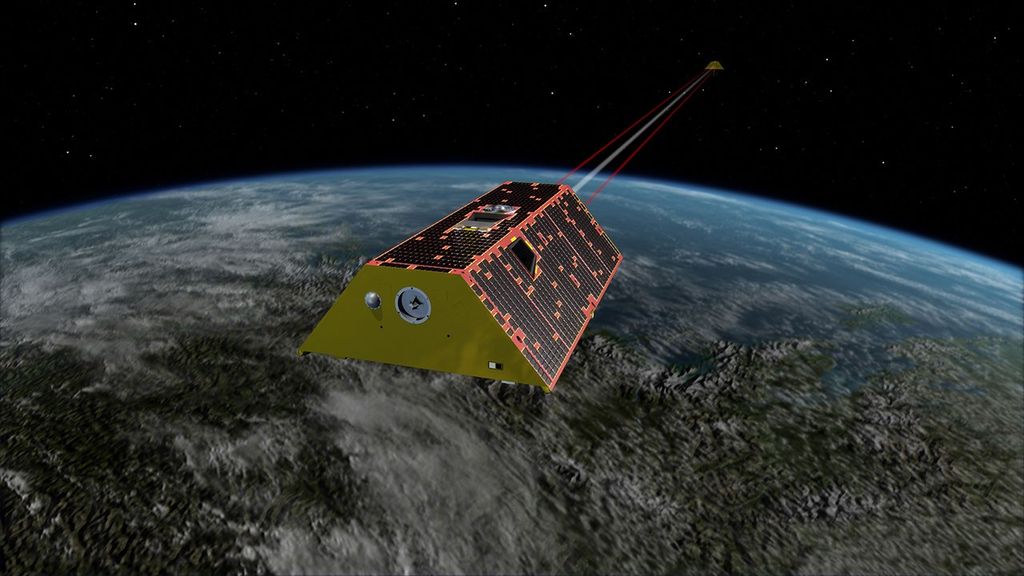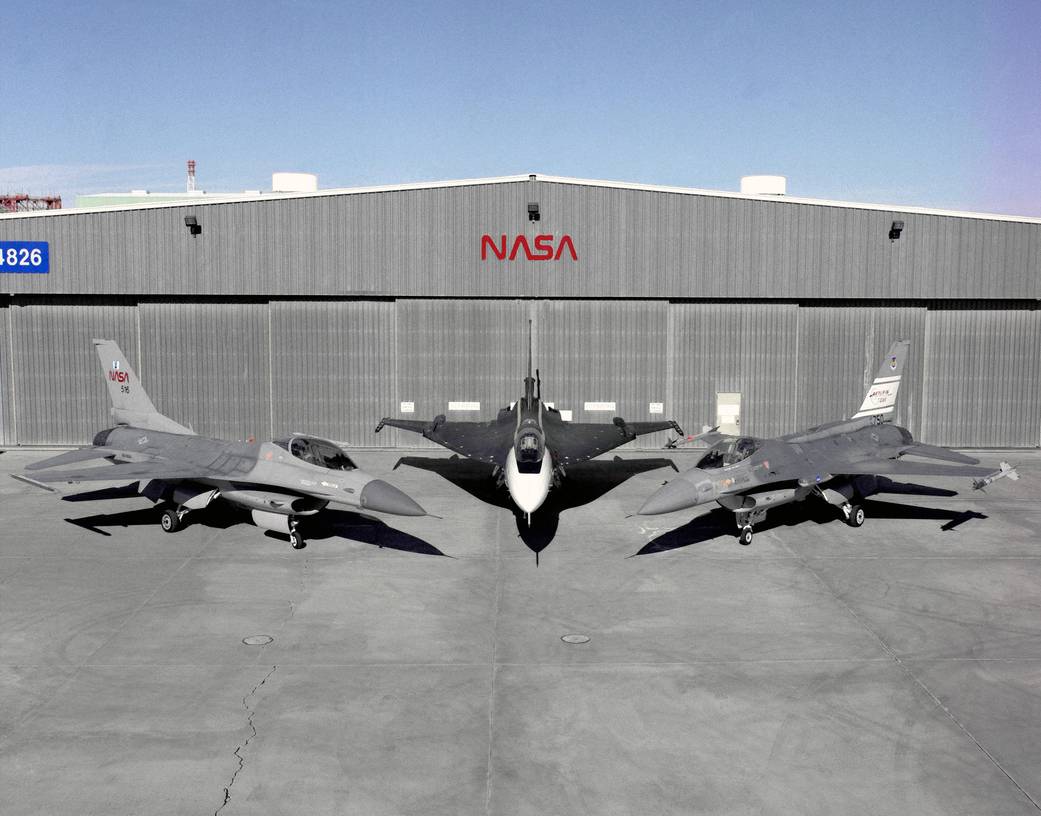EC95-42939-8
Photographed outside their hangar at the Dryden Flight Research Center, Edwards, Calif., part of Dryden’s F-16 fleet is, left to right; an F-16A, the F-16XL no. 1, and the F-16 AFTI. The F-16A (NASA 516), the only civil registered F-16 in existence, was transferred to Dryden from Langley, and was primarily used in engine tests and for parts. It was subsequently transferred from Dryden.
The single-seat F-16XL no. 1 (NASA 849) was most recently used in the Cranked-Arrow Wing Aerodynamics Project (CAWAP) to test boundary layer pressures and distribution. Previously it had been used in a project to investigate the characteristics of sonic booms for NASA’s High-Speed Research Program. Data from the program will be used in the development of a high-speed civilian transport. During the series of sonic boom research flights, the F-16XL was used to probe the shock waves being generated by a NASA SR-71 and record their shape and intensity.
The Advanced Fighter Technology Integration (AFTI) F-16 was used to develop and demonstrate technologies to improve navigation and a pilot’s ability to find and destroy enemy ground targets day or night, including adverse weather. Earlier research in the joint NASA-Air Force AFTI F-16 project demonstrated voice actuated controls, helmet-mounted sighting, and integration of forward-mounted canards with the standard flight control system to achieve uncoupled flight.February 2, 1995NASA Photo / › 1990s Fleet Description
2 min read































